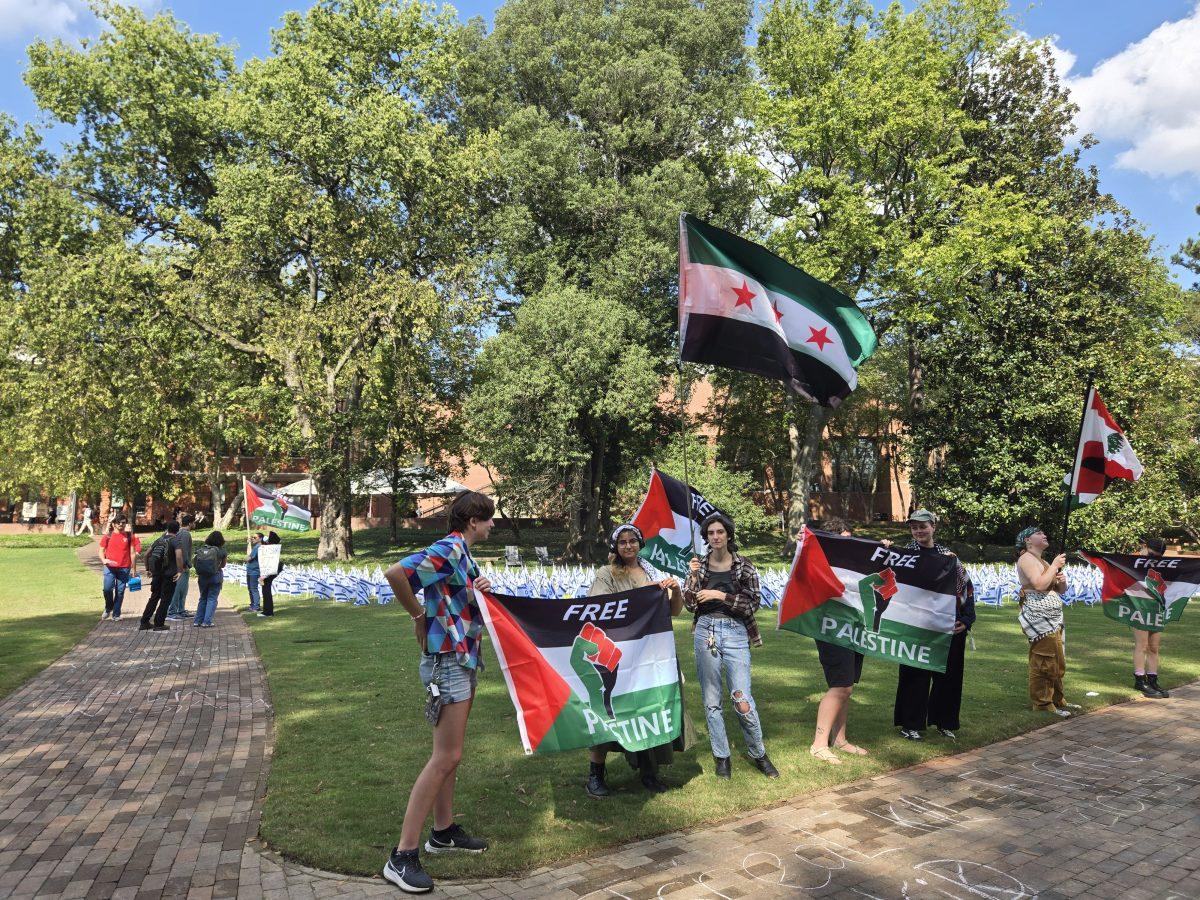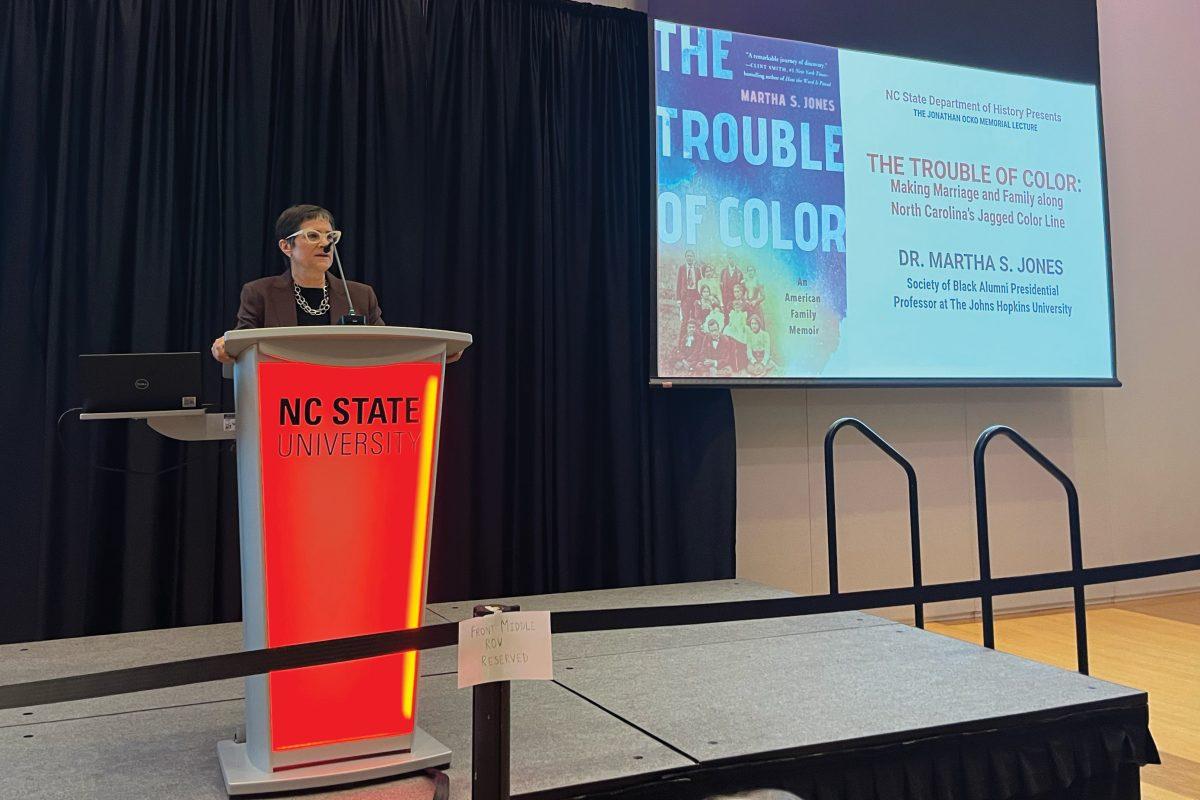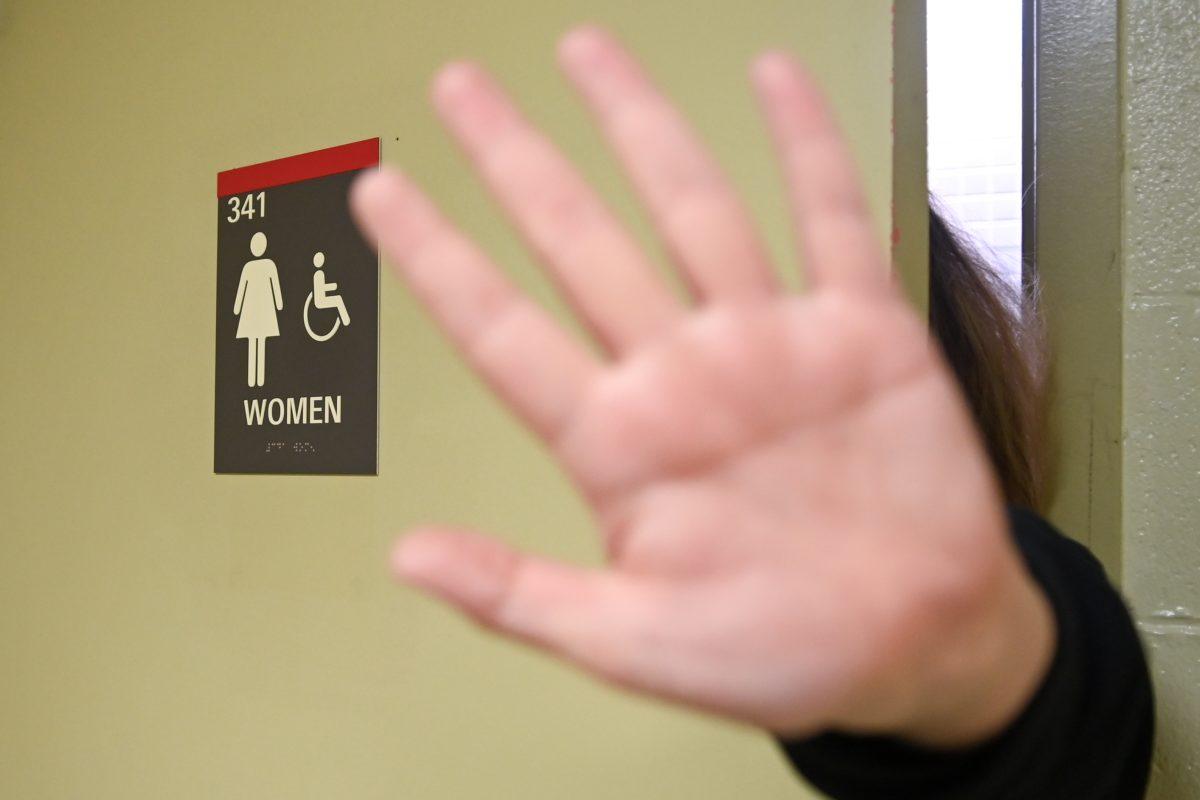Students marked the first anniversary of the Oct. 7 Hamas attacks on Israel with dueling demonstrations on campus Monday, highlighting ongoing tensions surrounding the Israel-Hamas war.
Members of Young Americans for Freedom planted 1,200 Israeli flags in the Court of North Carolina to commemorate Israeli lives lost in the attacks. Across from them, a group of students waved Palestinian flags in a counter-protest.
Stuart O’Connor, a second-year studying computer engineering and vice president of Young Americans for Freedom at NC State, said the group wanted to raise awareness about Israeli victims, who he feels have received less attention than Palestinian casualties.
“Everyone wants to talk about the Palestinian lives that were lost, and I really do feel for everyone that lost a family member …,” O’Connor said. “But these 1,200 Israelis are getting a lot less attention than the Palestinians, and so we want to raise up those 1,200 while also being mindful of everyone that lost their lives.”
The demonstration remained largely peaceful, though O’Connor said a few people had knocked down some flags earlier. Police officers, including two on horseback, were present to monitor the situation.
Across from the Israeli flags, students supporting Palestine stood in front of the display with their own flags representing Palestine, Syria and Lebanon.
Helal Khairullah, a third-year studying business administration and one of the counter-protesters, said he came out to oppose what he views as an “occupation” and “apartheid regime.”
“We’re trying to send the message that people like this, people that support this ideology, this destructive ideology of Zionism, should know that there is a lot of opposition on campus,” Khairullah said.
Meanwhile, Hillel at NC State held a “Community Day” event to mark the anniversary, featuring art exhibits, candle lighting and other activities to support Jewish students.
Eli Edds, a fourth-year studying engineering and a member of Hillel, said the past year was isolating for Jewish students on campus. Edds, who became more involved with Hillel after Oct. 7, said the attacks were a defining moment that made him realize he needed more connection to the Jewish community.
“I’ve been somewhat vocal trying to reshare things that I think people should see on Instagram, stuff that a lot of my fellow students might not see from that side,” Edds said. “I’ve lost probably 300 followers over the past year, old friends from high school and everything. I had people, acquaintances swipe up and tell me how brainwashed I was and how awful a person I was.”
Edds said he was frustrated with what he perceives as a lack of space for a nuanced discussion on campus.
“I, at least personally, try to really advocate for peace,” Edds said. “Neither side is perfect. Neither side is great. They all have done bad things. They all have done good things, and I can see and I can approach from the Palestinian point of view and I understand a lot of what they’re going through but there just hasn’t been that space from the other side.”
The dueling demonstrations reflect broader tensions that have played out on college campuses nationwide over the past year.
Alex Guadalupe, a fourth-year studying foreign languages and literature who was observing both groups, said he appreciated seeing different perspectives represented.
“It’s nice to see that people are voicing their opinion, trying to bring attention to others, because otherwise, many people might not learn about it,” Guadalupe said.
Edds said Jewish groups did not organize the Israeli flag display and that he and other Hillel members were surprised to see the demonstration and initially unsure who had arranged it.
Edds said he visited the site twice with his Jewish friends, seeing chalk drawings with phrases like “glory to martyrs” and red triangle markings that mark the targets of Hamas near the flag display and hearing counter-protesters recite a Jewish mourning prayer for what he said they called “Palestinian freedom fighters.”
“It’s just kind of been shocking to see how radicalized everyone’s been,” Edds said. “Everything is about the war in Gaza, and there’s no space to hold both sides or to have nuance. There’s almost no room in progressive circles to believe that Israel has a right to exist.”
The demonstrations come as the death toll in Gaza surpassed 41,000 as of Oct. 3, according to the Gaza Ministry of Health, and 97 of the original 251 hostages taken from Israel remain in the captivity of Hamas.
Efforts to negotiate a ceasefire have stalled, and the conflict has escalated into a broader regional confrontation involving Iran-backed groups in Lebanon, Yemen, Syria and Iraq.
On campus, students on both sides expressed a desire for dialogue, even as tensions remain high.
“We’re always open to dialogue,” Khairullah said. “If you’re from the other side and you won’t come up to us, but you’re saying a lot behind the scenes, just to spread lies on our name, spread lies that we’re spreading hate and division and that we’re antisemitic and we’re making people feel unsafe — this is not about race or religion. This is about humanity and standing up against an ideology that wishes to destroy another people for the sake of another people.”
Edds said while he is less optimistic about the chances for dialogue, he hopes that tensions might eventually ease.
“I guess the biggest hope is that we can just move past conflict and try to grieve through our pain together in a peaceful way,” Edds said.












